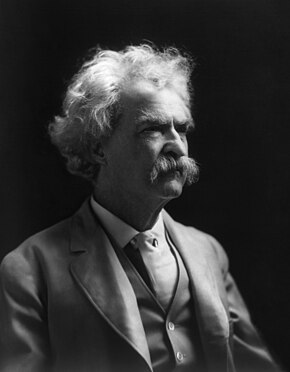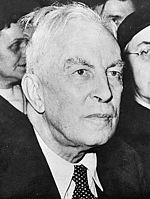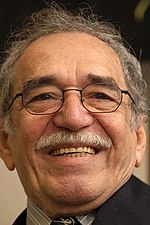From Wikipedia, the free encyclopedia
https://en.wikipedia.org/wiki/Historic_recurrence

Historic recurrence is the repetition of similar events in history. The concept of historic recurrence has variously been applied to overall human history (e.g., to the rises and falls of empires), to repetitive patterns in the history of a given polity, and to any two specific events which bear a striking similarity.
Hypothetically, in the extreme, the concept of historic recurrence assumes the form of the Doctrine of Eternal Recurrence, which has been written about in various forms since antiquity and was described in the 19th century by Heinrich Heine and Friedrich Nietzsche.
While it is often remarked that "history repeats itself", in cycles of less than cosmological duration this cannot be strictly true. In this interpretation of recurrence, as opposed perhaps to the Nietzschean interpretation, there is no metaphysics. Recurrences take place due to ascertainable circumstances and chains of causality.
An example is the ubiquitous phenomenon of multiple independent discovery in science and technology, described by Robert K. Merton and Harriet Zuckerman. Indeed, recurrences, in the form of reproducible findings obtained through experiment or observation, are essential to the natural and social sciences; and, in the form of observations rigorously studied via the comparative method and comparative research, are essential to the humanities.
G.W. Trompf, in his book The Idea of Historical Recurrence in Western Thought, traces historically recurring patterns of political thought and behavior in the west since antiquity. If history has lessons to impart, they are to be found par excellence in such recurring patterns.
Historic recurrences of the "striking-similarity" type can sometimes induce a sense of "convergence", "resonance" or déjà vu.
Authors

Ancient western thinkers who had thought about recurrence had largely been concerned with cosmological rather than historic recurrence (see "eternal return", or "eternal recurrence"). Western philosophers and historians who have discussed various concepts of historic recurrence include the Greek Hellenistic historian Polybius (c. 200 – c. 118 BCE), the Greek historian and rhetorician Dionysius of Halicarnassus (c. 60 BCE – after 7 BCE), Luke the Evangelist, Niccolò Machiavelli (1469–1527), Giambattista Vico (1668–1744), Correa Moylan Walsh (1862–1936), Arnold J. Toynbee (1889–1975).
An eastern concept that bears a kinship to western concepts of historic recurrence is the Chinese concept of the Mandate of Heaven, by which an unjust ruler will lose the support of Heaven and be overthrown. In the Islamic world, Ibn Khaldun (1332–1406) wrote that Asabiyyah (social cohesion or group unity) plays an important role in a kingdom's or dynasty's cycle of rise and fall.
G. W. Trompf describes various historic paradigms of historic recurrence, including paradigms that view types of large-scale historic phenomena variously as "cyclical"; "fluctuant"; "reciprocal"; "re-enacted"; or "revived". He also notes "[t]he view proceeding from a belief in the uniformity of human nature [Trompf's emphasis]. It holds that because human nature does not change, the same sort of events can recur at any time." "Other minor cases of recurrence thinking", he writes, "include the isolation of any two specific events which bear a very striking similarity, and the preoccupation with parallelism, that is, with resemblances, both general and precise, between separate sets of historical phenomena" (emphasis in original).
Lessons

G. W. Trompf notes that most western concepts of historic recurrence imply that "the past teaches lessons for ... future action"—that "the same ... sorts of events which have happened before ... will recur". One such recurring theme was early offered by Poseidonius (a Greek polymath, native to Apamea, Syria; c. 135–51 BCE), who argued that dissipation of the old Roman virtues had followed the removal of the Carthaginian challenge to Rome's supremacy in the Mediterranean world. The theme that civilizations flourish or fail according to their responses to the human and environmental challenges that they face, would be picked up two thousand years later by Toynbee. Dionysius of Halicarnassus (c. 60 BCE – after 7 BCE), while praising Rome at the expense of her predecessors—Assyria, Media, Persia, and Macedonia—anticipated Rome's eventual decay. He thus implied the idea of recurring decay in the history of world empires—an idea that was to be developed by the Greek historian Diodorus Siculus (1st century BCE) and by Pompeius Trogus, a 1st-century BCE Roman historian from a Celtic tribe in Gallia Narbonensis.
By the late 5th century, Zosimus (also called "Zosimus the Historian"; fl. 490s–510s: a Byzantine historian who lived in Constantinople) could see the writing on the Roman wall, and asserted that empires fell due to internal disunity. He gave examples from the histories of Greece and Macedonia. In the case of each empire, growth had resulted from consolidation against an external enemy; Rome herself, in response to Hannibal's threat posed at Cannae, had risen to great-power status within a mere five decades. With Rome's world dominion, however, aristocracy had been supplanted by a monarchy, which in turn tended to decay into tyranny; after Augustus Caesar, good rulers had alternated with tyrannical ones. The Roman Empire, in its western and eastern sectors, had become a contending ground between contestants for power, while outside powers acquired an advantage. In Rome's decay, Zosimus saw history repeating itself in its general movements.
The ancients developed an enduring metaphor for a polity's evolution, drawing an analogy between an individual human's life cycle and developments undergone by a body politic: this metaphor was offered, in varying iterations, by Cicero (106–43 BCE), Seneca (c. 1 BCE – 65 CE), Florus (c. 74 CE – c. 130 CE), and Ammianus Marcellinus (between 325 and 330 CE – after 391 CE). This social-organism metaphor, which has been traced back to the Greek philosopher and polymath Aristotle (384–322 BCE), would recur centuries later in the works of the French philosopher and sociologist Auguste Comte (1798–1857), the English philosopher and polymath Herbert Spencer (1820–1903), and the French sociologist Émile Durkheim (1858–1917).

Niccolò Machiavelli, analyzing the state of Florentine and Italian politics between 1434 and 1494, described recurrent oscillations between "order" and "disorder" within states:
when states have arrived at their greatest perfection, they soon begin to decline. In the same manner, having been reduced by disorder and sunk to their utmost state of depression, unable to descend lower, they, of necessity, reascend, and thus from good they gradually decline to evil and from evil mount up to good.
Machiavelli accounts for this oscillation by arguing that virtù (valor and political effectiveness) produces peace, peace brings idleness (ozio), idleness disorder, and disorder rovina (ruin). In turn, from rovina springs order, from order virtù, and from this, glory and good fortune. Machiavelli, as had the ancient Greek historian Thucydides, saw human nature as remarkably stable—steady enough for the formulation of rules of political behavior. Machiavelli wrote in his Discorsi:
Whoever considers the past and the present will readily observe that all cities and all peoples ... ever have been animated by the same desires and the same passions; so that it is easy, by diligent study of the past, to foresee what is likely to happen in the future in any republic, and to apply those remedies that were used by the ancients, or not finding any that were employed by them, to devise new ones from the similarity of events.

In 1377 the Arab scholar Ibn Khaldun, in his Muqaddima (or Prolegomena), wrote that when nomadic tribes become united by asabiyya—Arabic for "group feeling", "social solidarity", or "clannism"—their superior cohesion and military prowess puts urban dwellers at their mercy. Inspired often by religion, they conquer the towns and create new regimes. But within a few generations, writes Ibn Khaldun, the victorious tribesmen lose their asabiyya and become corrupted by luxury, extravagance, and leisure. The ruler, who can no longer rely on fierce warriors for his defense, will have to raise extortionate taxes to pay for other sorts of soldiers, and this in turn may lead to further problems that result in the eventual downfall of his dynasty or state.
Joshua S. Goldstein suggests that empires, analogously to an individual's midlife crisis, experience a political midlife crisis: after a period of expansion in which all earlier goals are realized, overconfidence sets in, and governments are then likely to attack or threaten their strongest rival; Goldstein cites four examples: the British Empire and the Crimean War; the German Empire and the First World War; the Soviet Union and the Cuban Missile Crisis; the United States and the Vietnam War. Suggestions that the European Union is suffering a political midlife crisis have been put forward by Gideon Rachman (2010), Roland Benedikter (2014), and Natalie Nougayrède (2017).
David Hackett Fischer has identified four waves in European history, each of some 150–200 years' duration. Each wave begins with prosperity, leading to inflation, inequality, rebellion and war, and resolving in a long period of equilibrium. For example, 18th-century inflation led to the Napoleonic wars and later the Victorian equilibrium.
Sir Arthur Keith's theory of a species-wide amity-enmity complex suggests that human conscience evolved as a duality: people are driven to protect members of their in-group, and to hate and fight enemies who belong to an out-group. Thus an endless, useless cycle of ad hoc "isms" arises.
Similarities
One of the recurrence patterns identified by G. W. Trompf involves "the isolation of any two specific events which bear a very striking similarity". The Spanish-American philosopher George Santayana observed that "Those who cannot remember the past are condemned to repeat it." Karl Marx, having in mind the respective coups d'état of Napoleon I (1799) and his nephew Napoleon III (1851), wrote acerbically in 1852: "Hegel remarks somewhere that all facts and personages of great importance in world history occur, as it were, twice. He forgot to add: the first time as tragedy, the second time as farce."
However, Poland's Adam Michnik believes that history is not just about the past because it is constantly recurring, and not as farce, as Marx had it, but as itself: "The world", writes Michnik, "is full of inquisitors and heretics, liars and those lied to, terrorists and the terrorized. There is still someone dying at Thermopylae, someone drinking a glass of hemlock, someone crossing the Rubicon, someone drawing up a proscription list."
In the 18th century, Samuel Johnson wrote that "whatever can happen to man has happened so often that little remains for fancy or invention" and that people are "all prompted by the same motives, all deceived by the same fallacies, all animated by hope, obstructed by danger, entangled by desire, and seduced by pleasure".
Plutarch's Parallel Lives traces the similarities between pairs of a Roman and a Greek historical figure.
Poland's Catholic Primate, Stanisław Szczepanowski, was murdered by his former friend, King Bolesław the Bold (1079); and England's Catholic Primate, Thomas Becket, was murdered at the behest of his former friend, King Henry II (1170).
Mongolian Emperor Kublai Khan's attempted conquest of Japan (1274, 1281) was frustrated by typhoons; and Spanish King Philip II's 1588 attempted conquest of England was frustrated by a hurricane.
Hernán Cortes's fateful 1519 entry into Mexico's Aztec Empire was reputedly facilitated by the natives' identification of him with their god Quetzalcoatl, who had been predicted to return that very year; and English Captain James Cook's fateful 1778 entry into Hawaii, during the annual Makahiki festival honoring the fertility and peace god Lono, was reputedly facilitated by the natives' identification of Cook with Lono, who had left Hawaii, promising to return on a floating island, evoked by Cook's ship under full sail.
On 27 April 1521, Portuguese explorer Ferdinand Magellan, in the Philippine Islands, foolhardily, with only four dozen men, confronted 1,500 natives who defied his attempt to Christianize them and was killed. On 14 February 1779, English explorer James Cook, on Hawaii Island, foolhardily, with only a few men, confronted the natives after some individuals took one of Cook's small boats, and Cook and four of his men were killed.
Poland's Queen Jadwiga, dying in 1399, bequeathed her personal jewelry for the restoration of Kraków University (which would occur in 1400); and Leland Stanford's widow Jane Stanford attempted, after his 1893 death, to sell her personal jewelry to restore Stanford University's financial viability, ultimately bequeathing the jewelry to fund the purchase of books for Stanford University.
In 1812 French Emperor Napoleon – born a Corsican outsider – was unprepared for an extended winter campaign, yet invaded the Russian Empire, precipitating the fall of the French Empire; and in 1941 German Führer Adolf Hitler – born an Austrian outsider – was unprepared for an extended winter campaign, yet invaded the Russian Empire's Soviet successor state (which was ruled by Joseph Stalin, born a Georgian outsider), thus precipitating the fall of the German Third Reich.
Mahatma Gandhi worked to liberate his compatriots by peaceful means and was shot dead; Martin Luther King Jr. worked to liberate his compatriots by peaceful means and was shot dead.
Over history, confrontations between peoples – typically, geographical neighbors – help consolidate the peoples into nations, at times into frank empires; until at last, exhausted by conflicts and drained of resources, the once militant polities settle into a relatively peaceful habitus. Martin Indyk observes: "Wars often don't end until both sides have exhausted themselves and become convinced that they are better off coexisting with their enemies than pursuing a futile effort to destroy them."
Polities ignored Jan Bloch's 1898 warnings of the railroad-mobilized, industrialized, stalemated, attritional total war, World War I, that was on the way and would destroy an appreciable part of mankind; and polities ignore geologists', oceanographers', atmospheric scientists', biologists', and climatologists' warnings of the climate-change tipping point that is on course to destroy all of mankind.
Humans tend to behave in accordance with the principles of social physics described by the English philosopher Thomas Hobbes after he had met the Italian physicist Galileo Galilei in 1636 in Florence. Humans, empirically-minded, tend to doubt what has not been presented by their own senses or by unquestioned authorities, and inertly to not act unless compelled by circumstances.
John Vaillant writes, in reference to the global-warming crisis, of "the self-protective tendency to favor the status quo over a potentially disruptive scenario one has not witnessed personally." While it was clear from the laws of physics that rising levels of "greenhouse gases" in Earth's atmosphere must eventually cause disastrous climate warming, with consequently enhanced droughts, floods, forest fires, and cyclones, people were easily lulled into complacency by the mendacities of fossil-fuel interests.
Similarly, navies continue building aircraft carriers, at enormous expense, despite their clear vulnerability to attack, because their construction creates civilian jobs and because, says Stephen Wrage, political science teacher at the U.S. Naval Academy, "Historically, the top leadership of military organizations has not abandoned obsolete prestige weapons until compelled to do so by a calamity."
People ignore warnings about the dangers of nuclear power plants until anticipated nuclear power-plant accidents occur; and people ignore warnings about the dangers of nuclear weapons, which in 1945 destroyed two Japanese cities, have on several occasions come close to destroying more of the world's cities, and could still do so in future.
The dangers of the fissile-fossil complex (nuclear-power generation and fossil-fueled power generation) have been denied or minimized by power interests, as the dangers of tobacco smoking have been denied or minimized by tobacco interests.
Jessica Tuchman Mathews, daughter of The Guns of August author Barbara Tuchman, observes that "[P]owerful reasons to doubt that there could be a limited nuclear war [include] those that emerge from any study of history, a knowledge of how humans act under pressure, or experience of government." Apposite evidence for this is provided in Martin J. Sherwin's Gambling with Armageddon, which makes clear, on the basis of recently declassified documents, that it was a matter of sheer chance that war was averted during the Cuban Missile Crisis: numerous events, had they taken a slightly different course, could each have precipitated nuclear war.

Fintan O'Toole writes about American war correspondent Martha Gellhorn (1908–1998):
Her dispatches were not first drafts of history; they were letters from eternity. ... To see history – at least the history of war – in terms of people is to see it not as a linear process but as a series of terrible repetitions ... It is her ability to capture ... the terrible futility of this sameness that makes Gellhorn's reportage so genuinely timeless. [W]e are ... drawn... into the undertow of her distraught awareness that this moment, in its essence, has happened before and will happen again.
Casey Cep, describing a dissonance between William Faulkner's documented personal racism and Faulkner's depiction of the American Confederacy, writes that Michael Gorra, in The Saddest Words: William Faulkner's Civil War (Liveright, 2020),
posits that [the character] Quentin [Compson, who suicides in Absalom, Absalom!] represents Faulkner's view of tragedy as recurrence. "Again" was the saddest word for the character and the author alike because it "suggests that what was has simply gone on happening, a cycle of repetition that replays itself, forever." ... "What was is never over", Gorra writes, pointing out that the racism that ensnared Faulkner in the last century persists in th[e 21st] ... "Again. That's precisely why Faulkner remains so valuable – that very recurrence makes him necessary."

British novelist Martin Amis observes that recurring patterns of imperial ascendance-and-decline are mirrored in the novels published; according to Amis, novels follow current political trends. In the Victorian era, when Britain was the ascendant power, British novels were large and tried to express what society as a whole was. British power waned during the Second World War and ended after the war. The British novel was then some 225 pages long and centered on narrower subjects such as career setbacks or marriage setbacks: the British novel's "great tradition" increasingly looked depleted. Ascendance, according to Amis, had passed to the United States, and Americans such as Saul Bellow, Norman Mailer, Philip Roth, and John Updike began writing huge novels.
Novelists and historians have discerned recurrent patterns in the histories of modern political tyrants.

Gabriel García Márquez, in his novel The Autumn of the Patriarch (1975), ... create[d] a composite character: a mythical, unnamed autocrat who has held sway, seemingly forever, over an invented Caribbean country akin to Costaguana in Joseph Conrad's Nostromo. To portray him, García Márquez drew upon a motley cohort of Latin American caudillos ... as well as Spain's Generalissimo Francisco Franco ...
Ruth Ben-Ghiat in Strongmen: Mussolini to the Present (2020), writes Ariel Dorfman, documents the "viral recurrence" around the world, over the past century, of despots and authoritarians "with comparable strategies of control and mendacity". Ben-Ghiat divides the narrative into three – at times, overlapping – periods:
The era of fascist takeovers runs from 1919 and the ascent of Mussolini until Hitler's defeat in 1945, with Franco as the third member of this atrocious trio ... [In] the next phase, the age of military coups (1950–1990) [t]he main representatives ... are Pinochet, Muammar Qaddafi, and Mobutu Sese Seko, along with minor figures like Idi Amin, Saddam Hussein, and Mohamed Siad Barre. Finally, starting in 1990 [is] the ... cycle of new authoritarians, who win elections and proceed to degrade the democracy that brought them to power. Ben-Ghiat primarily dissects Silvio Berlusconi, Vladimir Putin, and Donald Trump, with Viktor Orbán, Jair Bolsonaro, Rodrigo Duterte, Narendra Modi, and Recep Tayyip Erdoğan given perfunctory assessments.
Dorfman notes the absence, from Ben-Ghiat's study, of many authoritarian rulers, including communists like Mao, Stalin, Ceaușescu, and the three Kims of North Korea. Nor is there mention of Indonesia's Suharto or the Shah of Iran, Mohammad Reza Pahlavi, "though the CIA engineered coups that led to both ... lording it over their lands, and the agency can also be linked to Pinochet's military putsch in Chile." Dorfman believes that Juan Domingo Perón would also have been an instructive example to include in Ruth Ben-Ghiat's study of Strongmen.
British political commentator Ferdinand Mount brings attention to the ubiquitous recurrence of mendacity in politics: politicians lie to cover up their mistakes, to gain advantage over their opponents, or to achieve purposes that might be unpalatable or harmful to their public or to a foreign public. Some notable practitioners of political mendacity discussed by Mount include Julius Caesar, Cesare Borgia, Queen Elizabeth I, Oliver Cromwell, Robert Clive, Napoleon, Winston Churchill, Tony Blair, Boris Johnson, and Donald Trump.